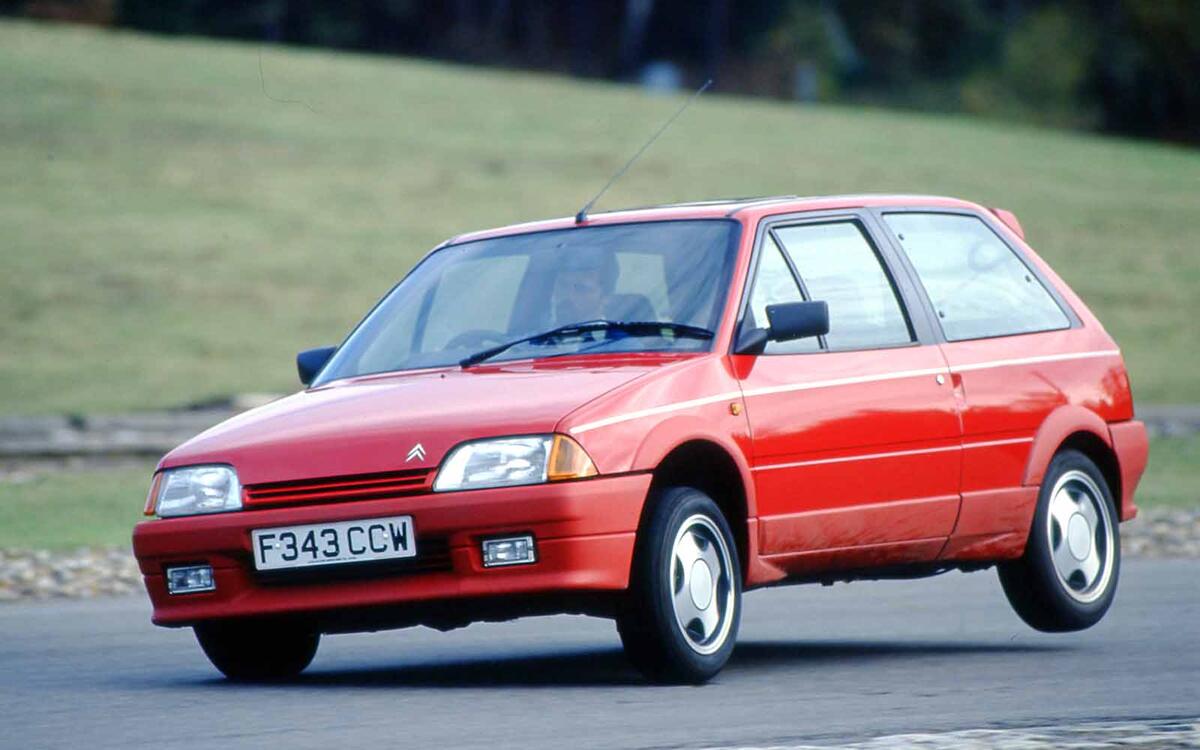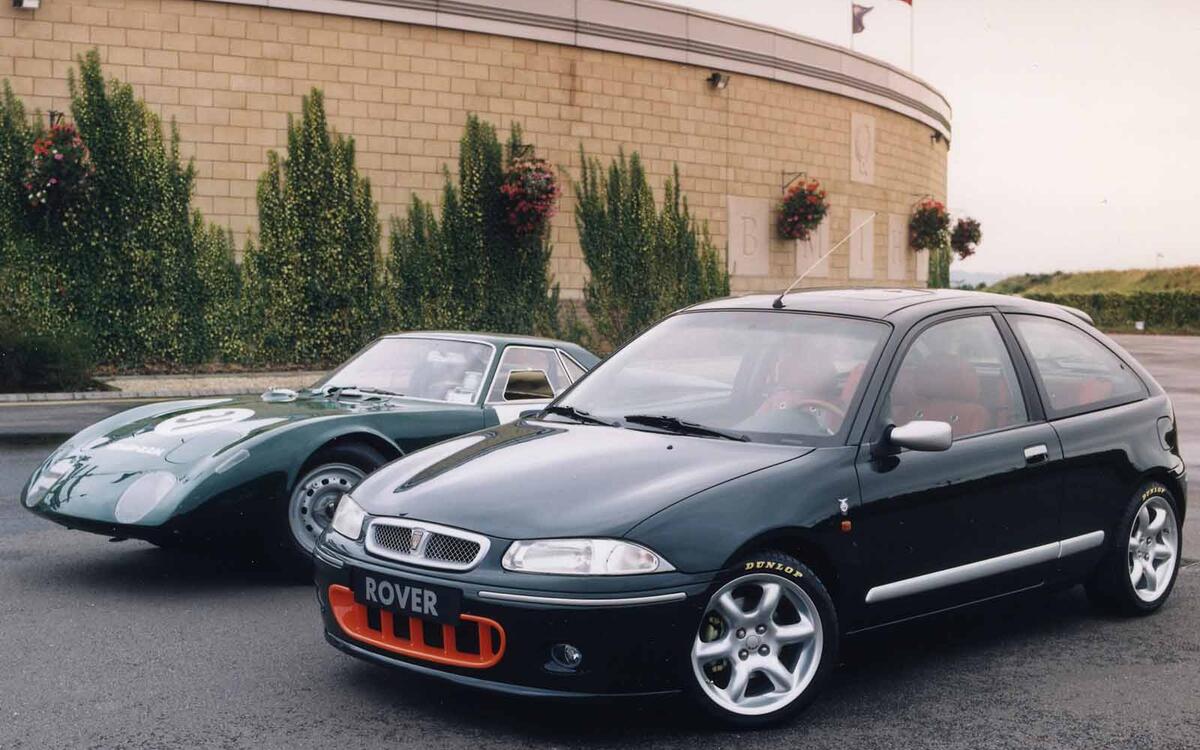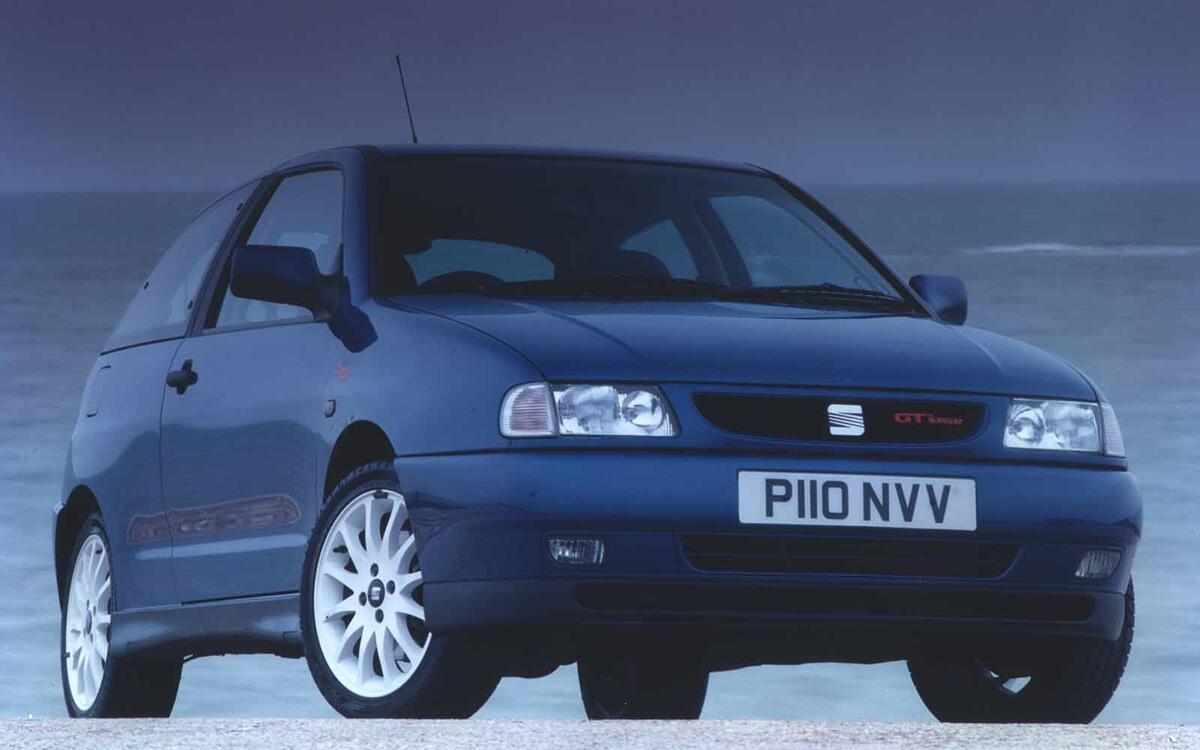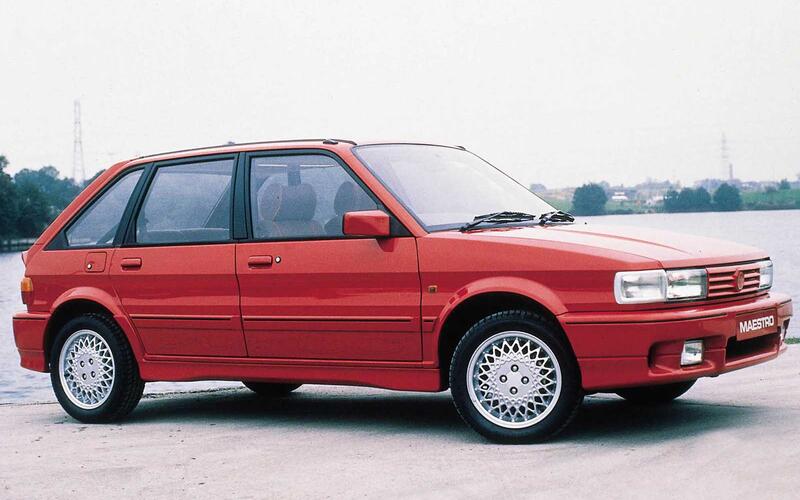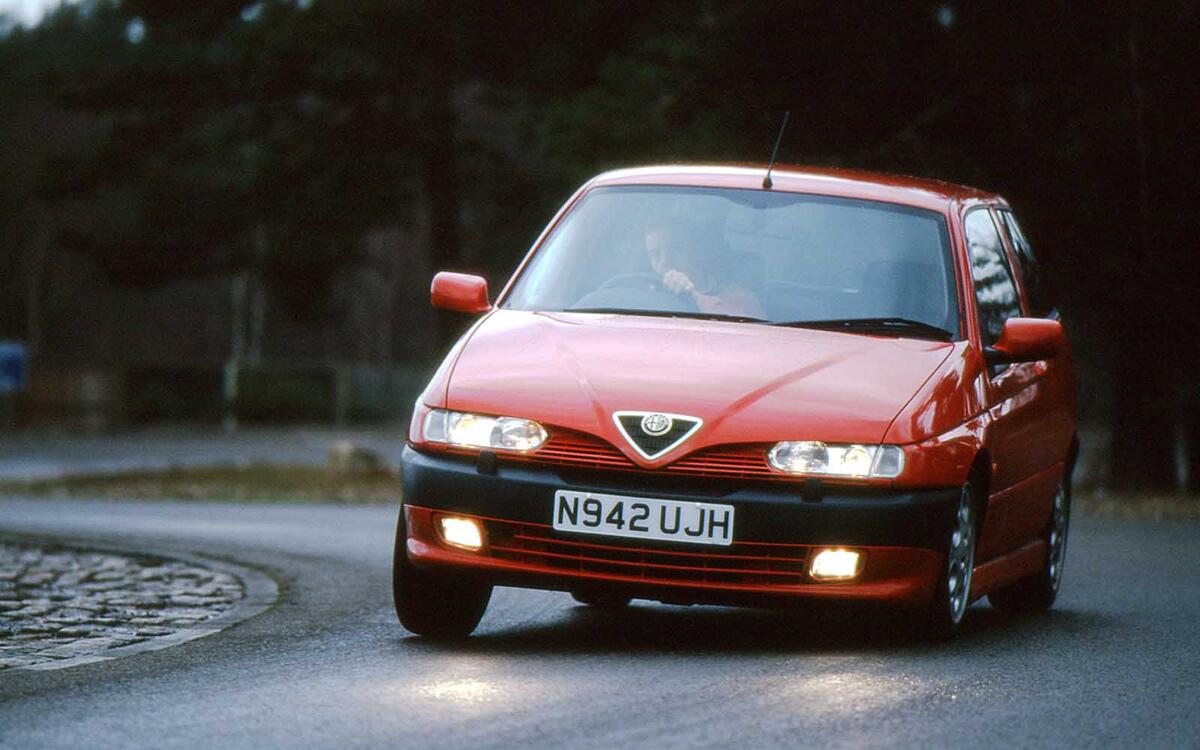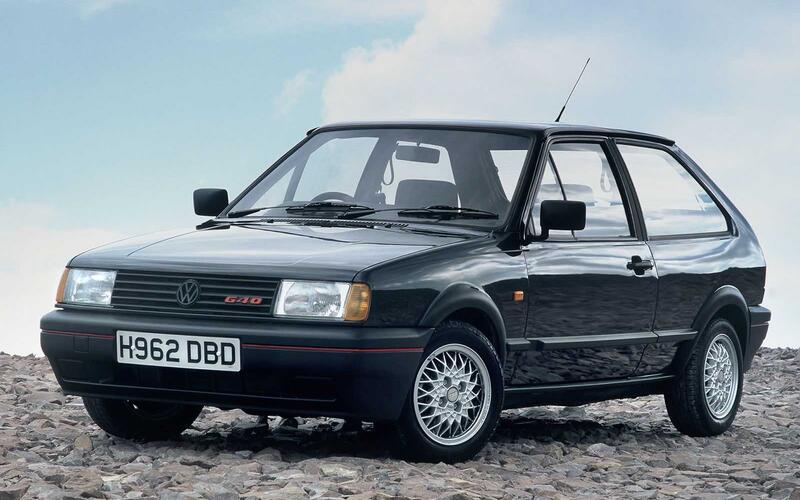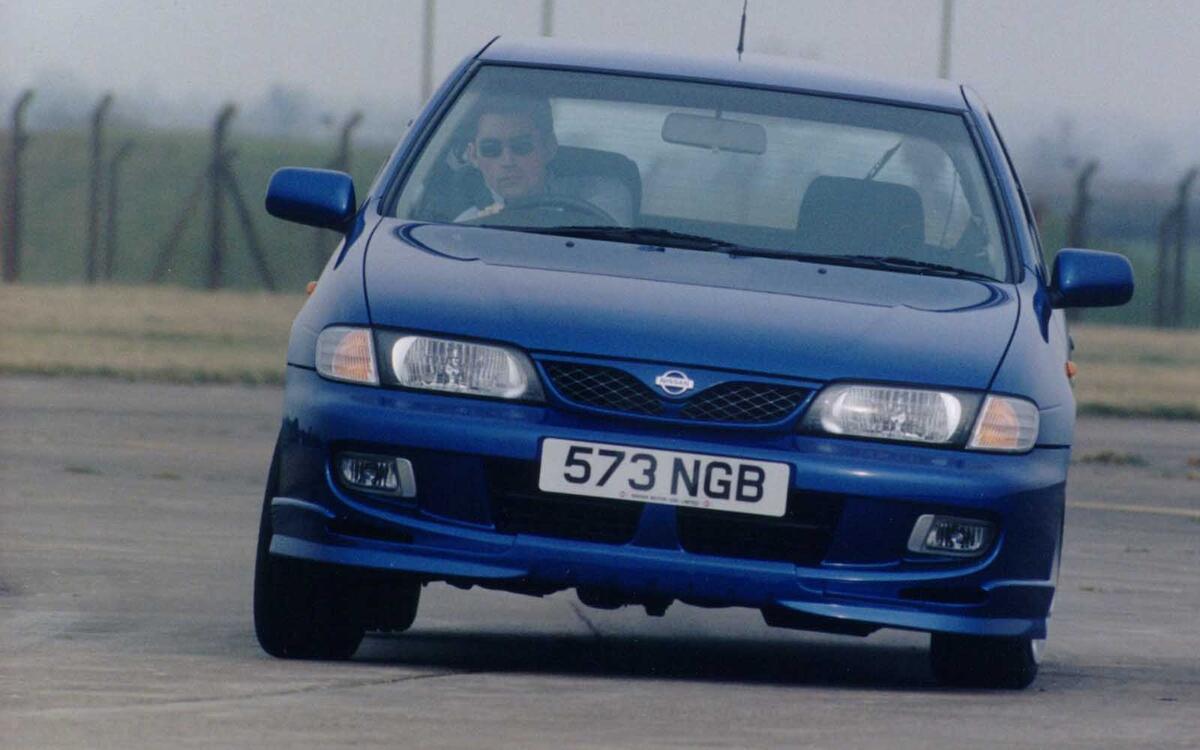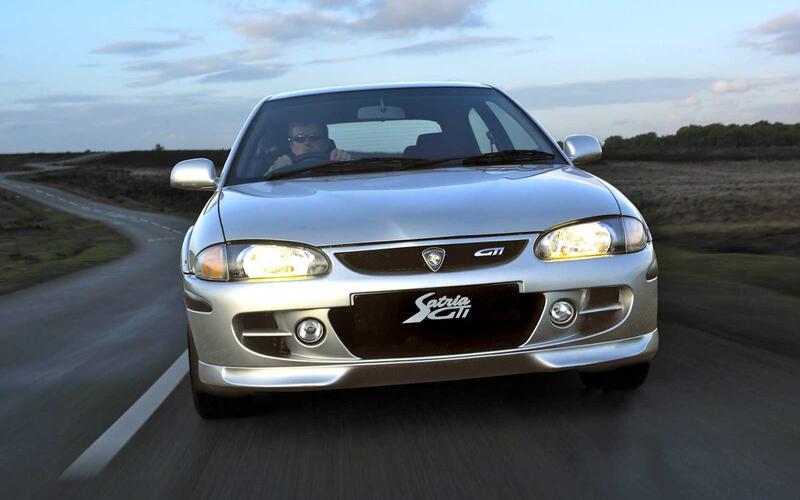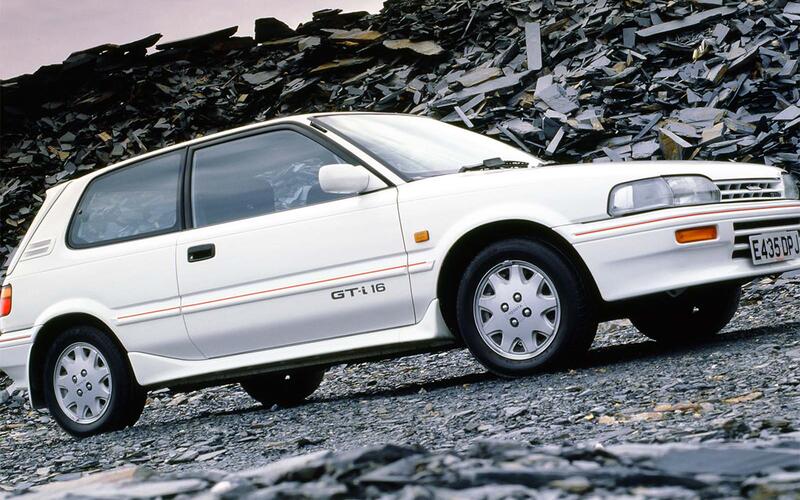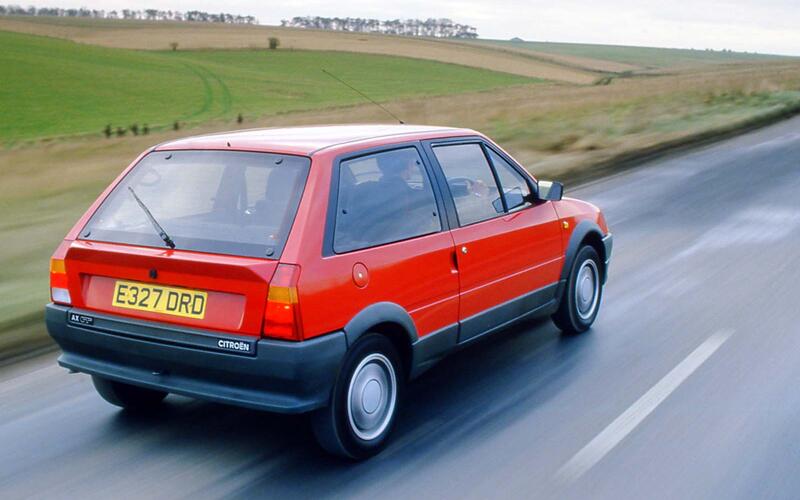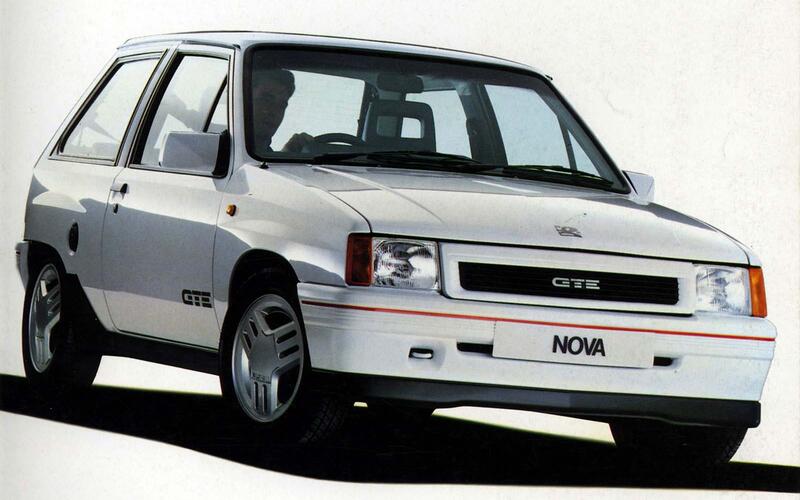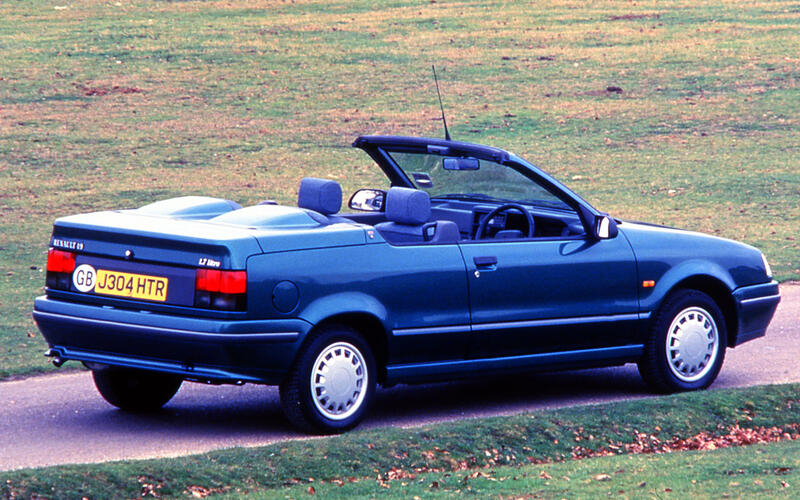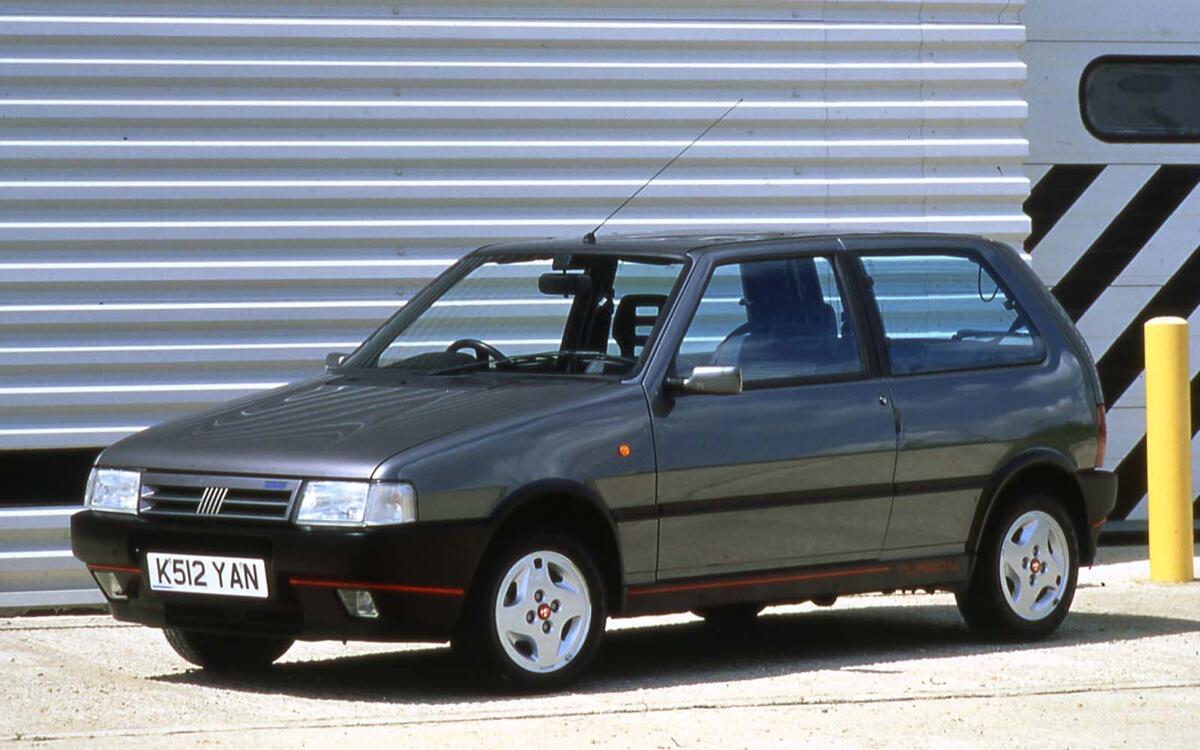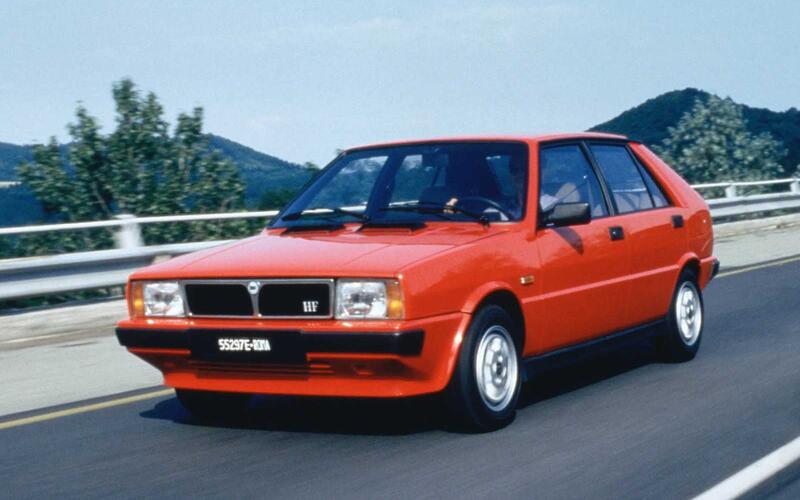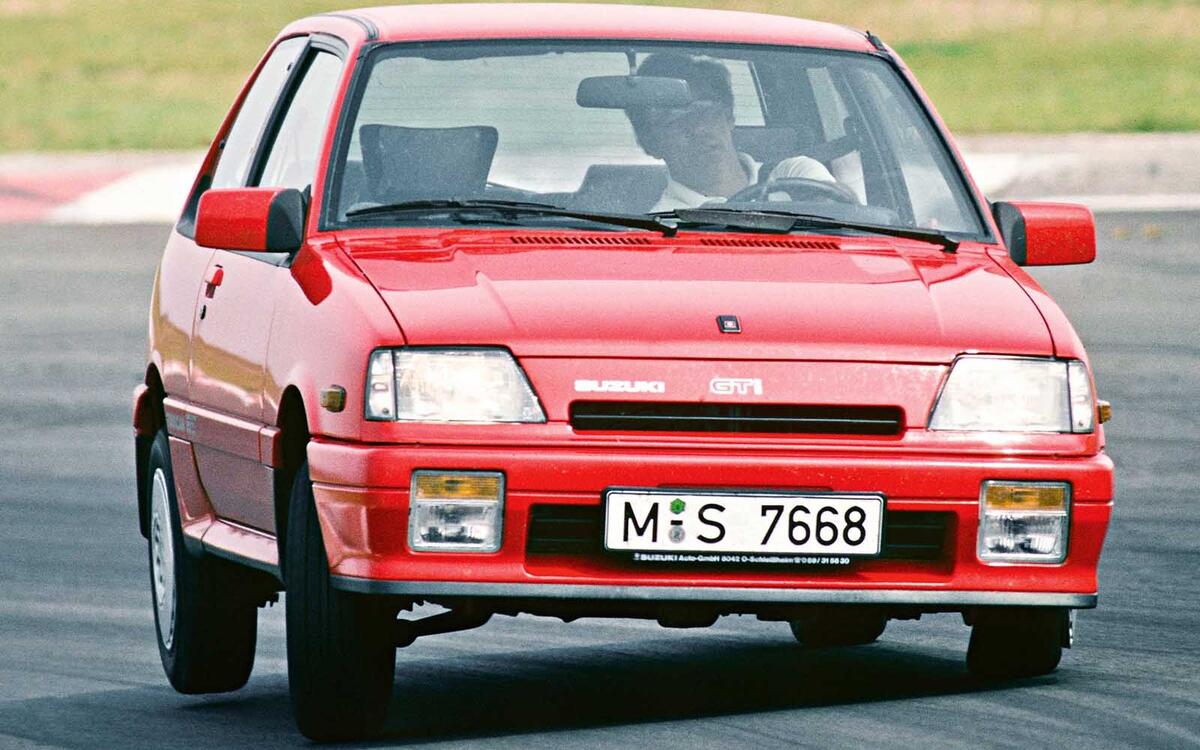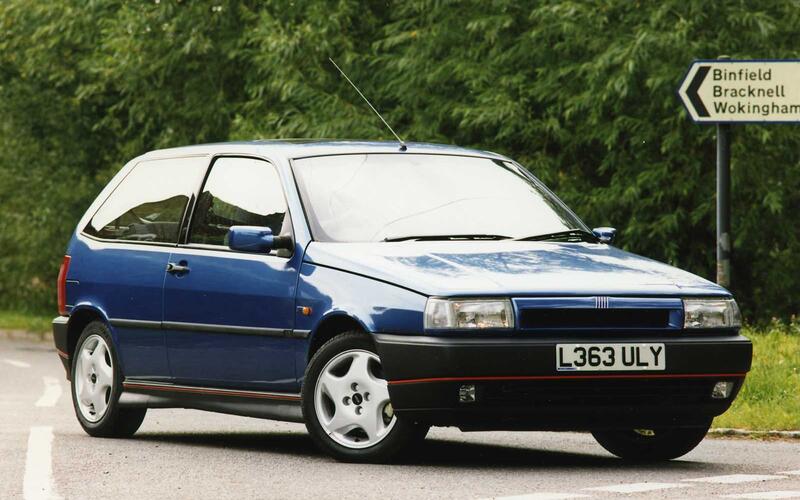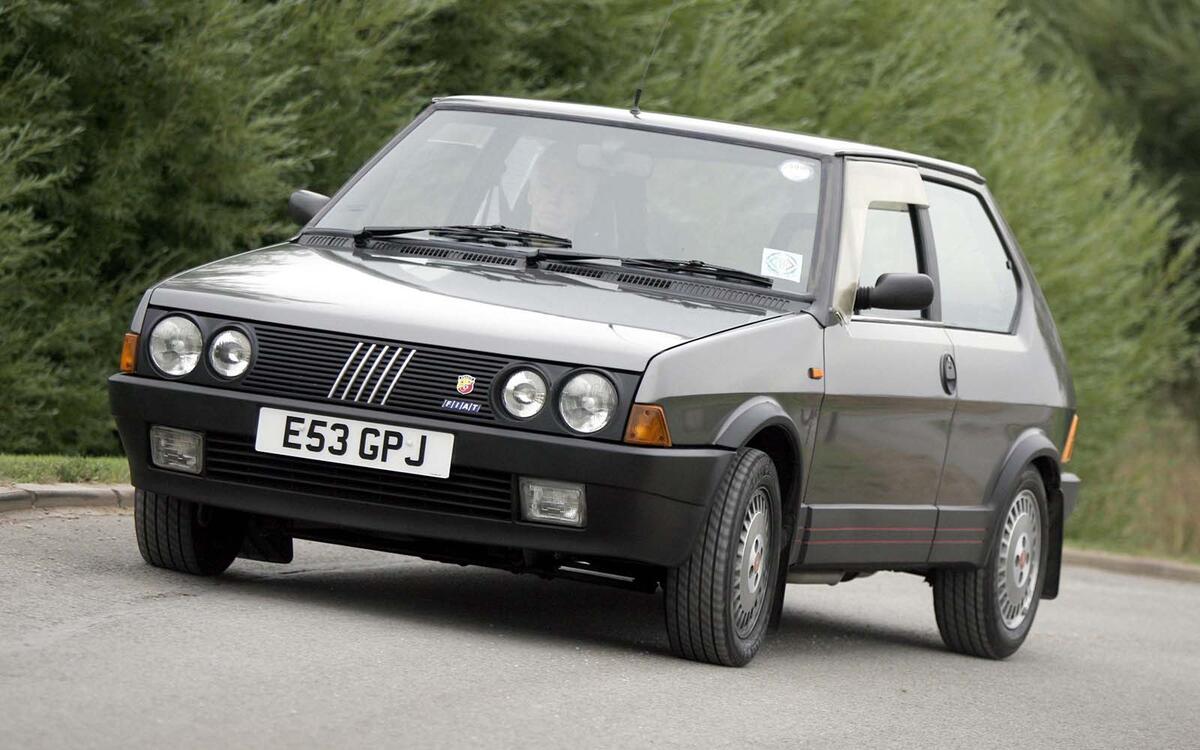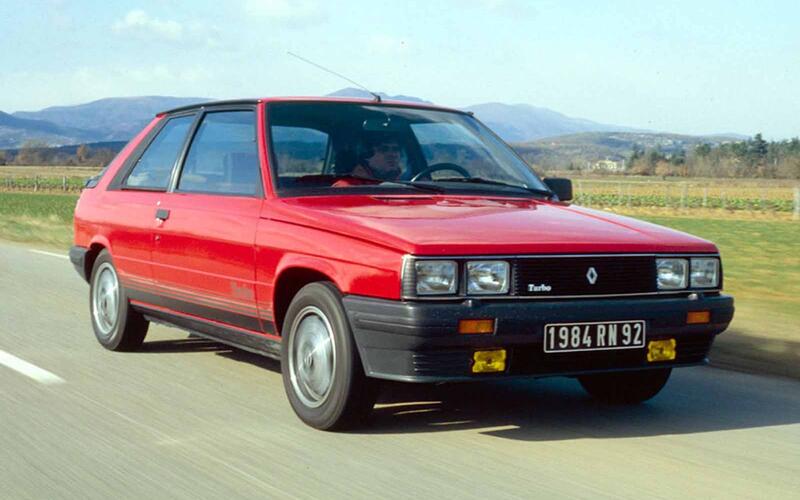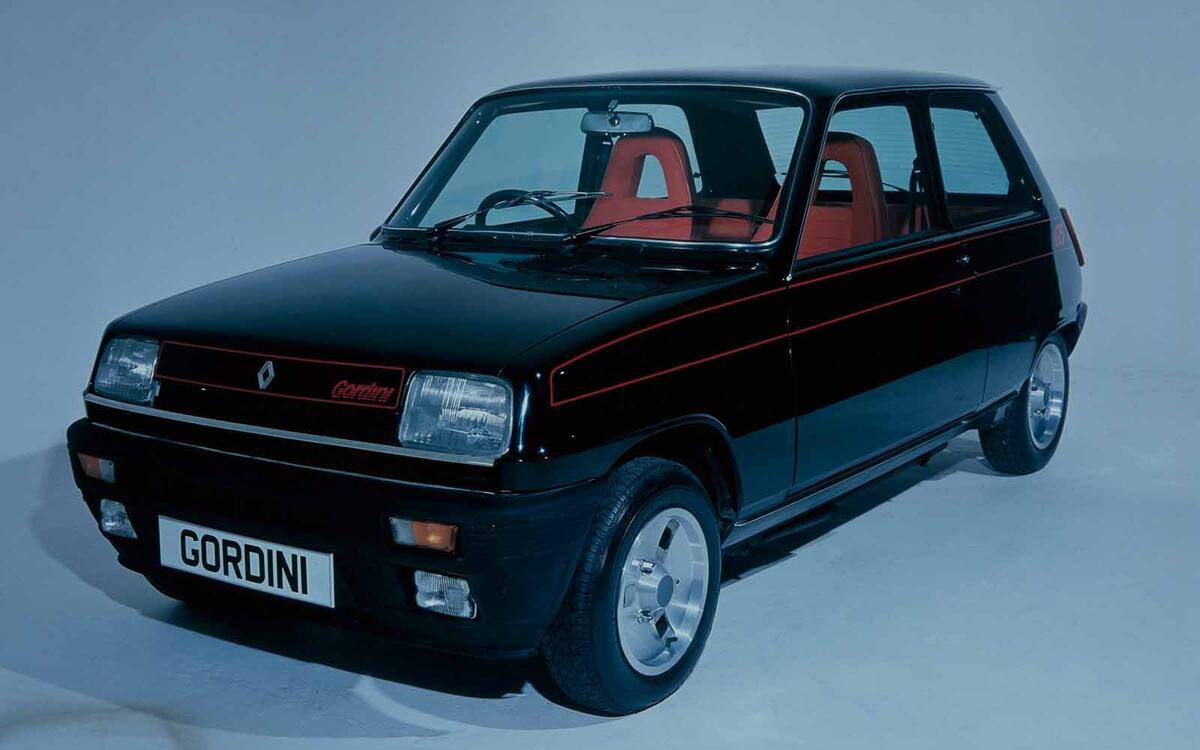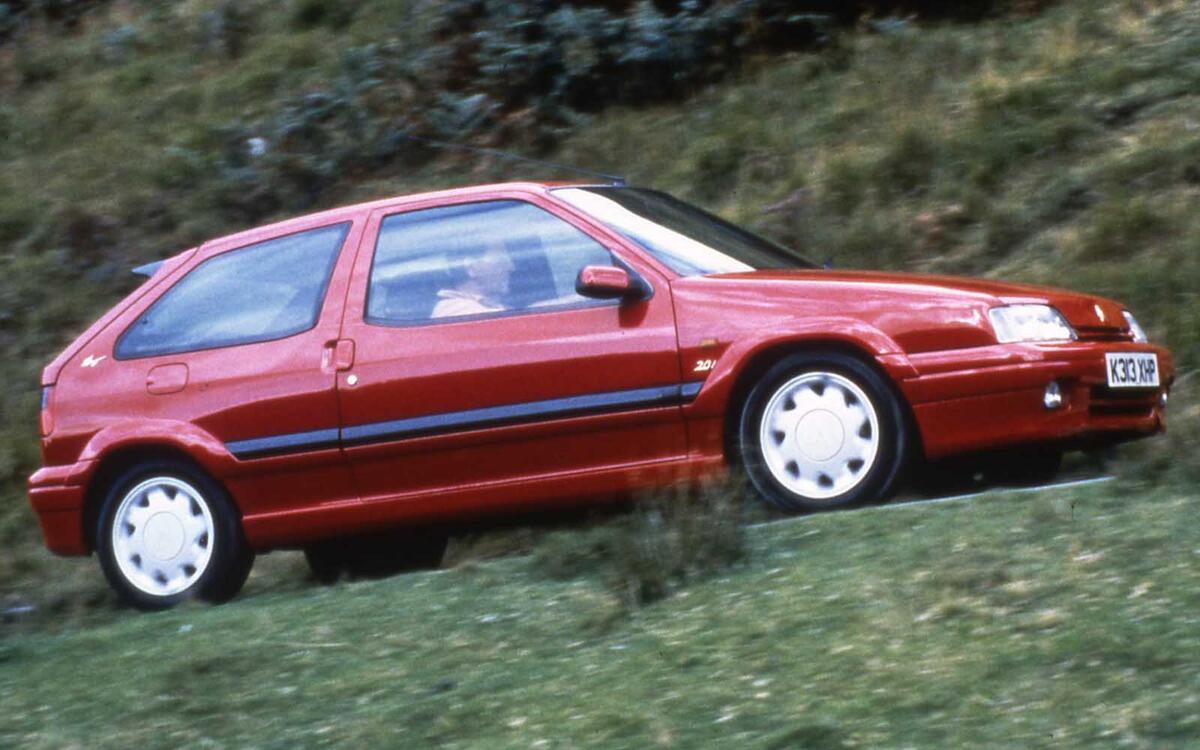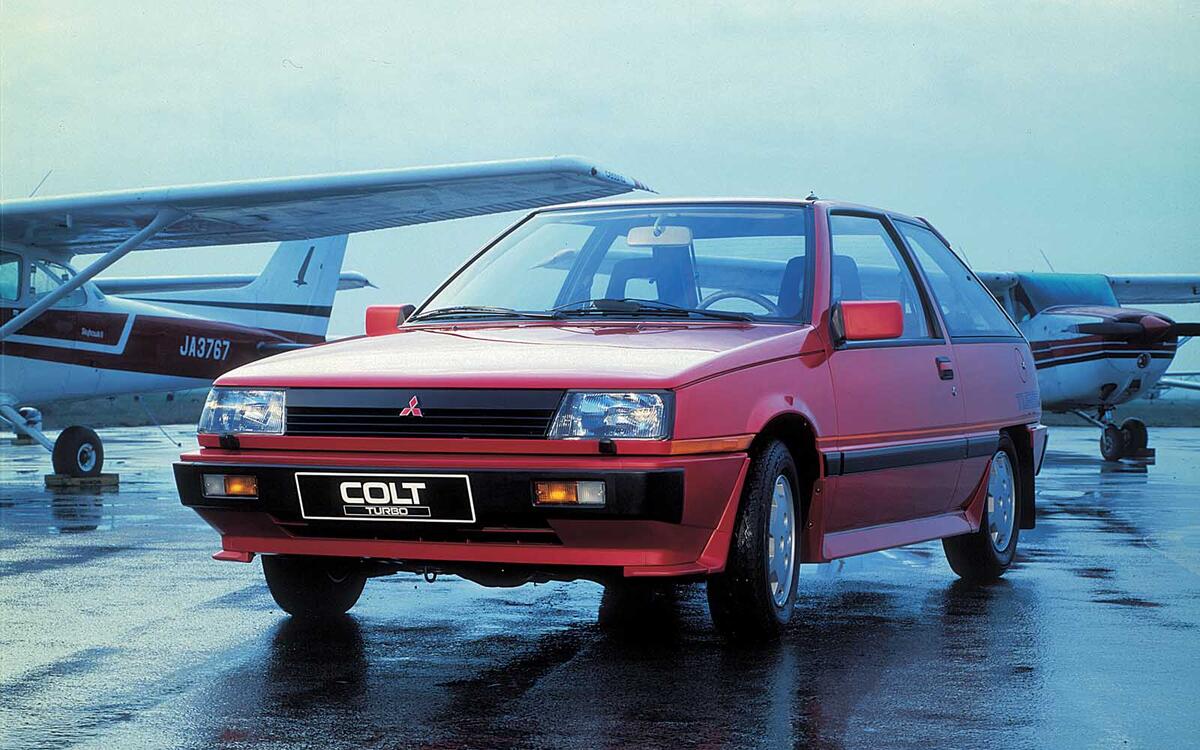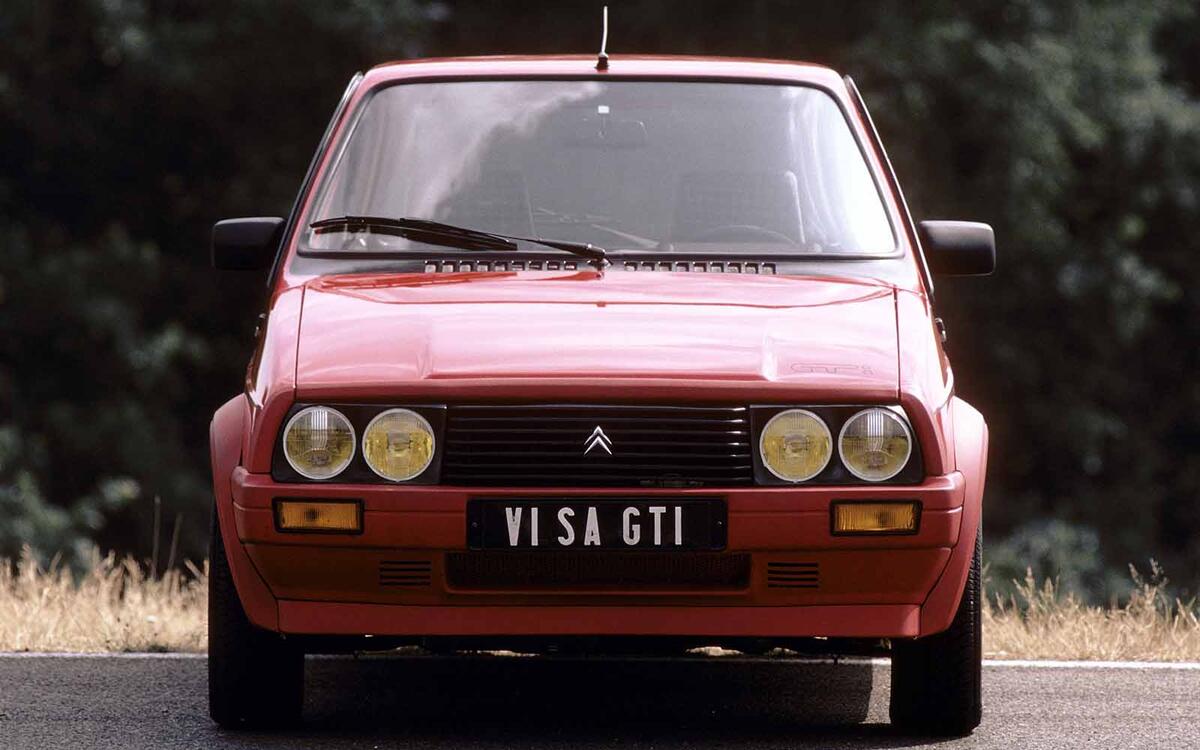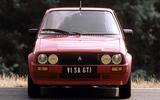 Slide of
Slide of
Many hot hatches of the 1980s and 1990s are heading towards extinction.
If the cars were animals, the WWF would class them as ‘critically endangered’. Some never sold hugely in the first place, while others have rusted away or died in a hedgerow or farmer’s field.
Here, then, are the hot hatches on the verge of extinction. The also-rans and the obscure. Many of the following cars are rarer in the UK than a McLaren Senna, while some are more exclusive than a McLaren F1. The figures are sourced via the How Many Left? website using DVLA data, which lags somewhat so please bear that in mind:
 Slide of
Slide of
MG Metro – 94 on the road
The hot hatch was still in its infancy when MG launched the Metro in 1982. Its arrival came 18 months after the closure of the MG factory in Abingdon, with British Leyland using the famous badge to lend the humble Metro some go-faster polish. MG purists weren’t keen, but the MG Metro gave BL a credible rival to the recently launched Ford Fiesta XR2.
Power was sourced from a 1275cc engine producing 72bhp, which was enough to give the mighty Metro a top speed of 101mph.
 Slide of
Slide of
Rover 200 BRM – 76 on the road
Was it the orange snout? Or the lush interior? Maybe it was the badge? Whatever the reason, the public failed to embrace the Rover 200 BRM. A launch price of £18,000 proved too optimistic, so the price was lowered to £17,000, then £13,500. Sales incentives were offered and some dealers even painted the lower grille silver.
It was a great package. Using the fine 200Vi as a base, Rover added lower and stiffer suspension, revised damper settings, alloy wheels inspired by the classic Minilites design and an interior that looked and felt bespoke. Just 797 were sold in the UK, of which 76 are in active service. That’s not enough for a car that deserves more respect.
 Slide of
Slide of
Seat Ibiza GTI – 71 on the road
The Seat Ibiza came of age in the 1990s. The era of rebadged Fiats was over, with VW’s formidable might helping to reinvent Seat as Volkswagen Group’s sporty arm. Unlike subsequent versions, the second-generation Ibiza was based on the Golf platform, rather than the smaller Polo. Crucially, it offered far more flair than its German counterpart.
First, in 1993, came the Ibiza GTI with the 1.8-litre 8-valve from the Golf GTI, followed a year later by the 16-valve version. Later, in 1996, the Ibiza GTI benefited from the 2.0-litre engine from the Mk3 Golf GTI, in both 8- and 16-valve forms. Rarer and more stylish than a Golf, you should buy one while you can.
 Slide of
Slide of
MG Maestro – 41 on the road
By virtue of having five doors, the MG Maestro brought something different to a hot hatch market dominated in the main by cars with three doors. Launched in 1983 with a 1.6-litre engine, the more desirable fuel-injected 2.0i EFI arrived in October 1984. This edged the MG Maestro to within a whisker of the best of the breed, but it was little more than a prelude to the main event.
The MG Maestro Turbo of 1988 was built alongside the standard cars in Cowley before being shipped to Tickford for the bodykit and graphics. Adding a Garrett T3 turbocharger boosted output to 150bhp and lowered the 0-60mph time to 6.7 seconds. Just 505 Maestro Turbos were built, with just 10 on the road in 2021.
 Slide of
Slide of
Peugeot 309 GTi – 71 on the road
The Peugeot 309 GTi always looked like the 205 GTi’s frumpy sibling. While the chic supermini was invited to the best parties, the less desirable three-box saloon tended to be left on the shelf. The numbers tell a story: there are around a thousand 205 GTis still on the road, but just 71 Peugeot 309 GTis in daily use.
Those in the know will tell you that the 309 GTi is more than a match for the 205 GTi. Some will argue that the 309’s stiffer body gives it the edge. A larger and more comfortable version of the 205 GTi – what’s not to like? Your biggest challenge will be finding a good one.
 Slide of
Slide of
Alfa Romeo 145 Cloverleaf – 55 on the road
Chris Bangle said that the Alfa Romeo 145 "started life on my sketchpad as a new Lancia Delta". Lancia’s loss was Alfa’s gain, because the 145 was one of the most stylish cars of the era. It was also one of Bangle’s most successful designs, although not everyone appreciated the ‘breadvan’ styling.
The 145 Cloverleaf – or Quadrifoglio – used the 2.0-litre 16-valve Twin Spark engine from the larger 155, producing 148bhp in early cars, or 153bhp in phase two models. It wasn’t perfect, but the 145 Cloverleaf had all the hallmarks of a classic driver’s car. This makes it all the more galling that just 55 are on the road.
 Slide of
Slide of
Volkswagen Polo G40 – 49 on the road
Supercharged hot hatches are thin on the ground; there are just 77 Toyota Yaris GRMNs on the road, for example. But the VW Polo G40 got there much earlier. Based on the range-topping GT, the Polo G40 drew its power from a G-Lader supercharger, with peak power of 113bhp at 6000rpm. We described it as “a lot of fun”, although not enough to recommend it over a 205 GTi or XR2i.
 Slide of
Slide of
Nissan Almera GTi – 41 on the road
Shut up! Readers of a certain age will forever associate the Nissan Almera GTi with the brilliant television ads of the 1990s. Nissan released the corporate shackles to create parodies of The Sweeney and The Professionals, although neither had the desired effect. To most people, Almera GTi was a contradiction in terms.
It deserved better. The Nissan Almera GTi was one of the most underrated hot hatches of the era, offering sharp handling, precise steering and a complete absence of torque-steer. Few four-cylinder engines were as sweet as the Primera eGT-derived 2.0-litre 16-valve unit. Only the humdrum styling lets it down, although the understated look is part of its charm. Oh blimey.
 Slide of
Slide of
Proton Satria GTi – 53 on the road
It would be best to describe the Proton Satria GTi as a ‘rough diamond’. Maybe that should be ‘rough rectangle’, in a subtle nod to the shape of the exhaust pipes. Whatever, Lotus deserves great credit for taking a humble Proton Satria – essentially a reheated Mitsubishi Colt – and creating a hot hatch of some merit.
The Satria GTi emerged from Hethel with sublime handling, sharp steering, a Mitsubishi-sourced 1.8-litre engine producing 133bhp and a styling makeover as divisive as a famous yeast extract. Were exposed rivets on wheel arch extensions ever in fashion? These make great track day toys, as evidenced by the dwindling numbers. A Proton it’s okay to fancy? That’ll be the Satria GTi.
 Slide of
Slide of
Toyota Corolla GTi-16 – 33 on the road
In a sector obsessed with performance figures, the Toyota Corolla GTi-16 failed to stand out. Its 1.6-litre 16-valve engine produced 123bhp at 6600rpm, just enough to deliver a 0-60mph time of nine seconds and a top speed of 116mph. The Daihatsu Charade GTti, with its turbocharged 993cc engine, could hit 60mph in 8.2 seconds. On the plus side, it was faster flat-out than the Escort XR3i and Golf GTI.
Look beyond the numbers and you’ll find a brilliant driver’s car. Motor described the chassis as “truly superb”, proclaiming it to be “the best”. Throw into the mix the “slick gearchange, ideal driving position and great brakes and you have a very complete driving machine”. High praise for the oft-forgotten hot Corolla.
 Slide of
Slide of
Citroën AX GT – 27 on the road
James May described the Citroën AX GT as the best car he’d ever driven. Although his tongue was almost certainly inserted in cheek, his rationale was based on Top Trumps dealing with qualitative as well as quantitative attributes of cars. He did concede that it “would probably kill you in a crash”.
Manufacturers are no longer able to build cars like the AX GT. A car devoid of safety features and driver assistance systems would be as welcome in 2021 as a fox in a hen house. It’s this purity and simplicity that make the Citroën AX GT such a welcome tonic. On the right road, an AX GT will raise more smiles than a supercar costing 100 times its price.
 Slide of
Slide of
Vauxhall Nova GTE – 32 on the road
Many young car enthusiasts grew up wanting a Vauxhall Nova GTE; it was the junior choice for a generation. It arrived in 1988, four years after the sporty SR, with power sourced from a fuel-injected 1.6-litre engine producing 100bhp at 5600rpm. As recently as 1994 there were 8500 on the road.
It beat the Ford Fiesta XR2 in the areas that matter. Quicker to 60mph, significantly faster to 100mph, with an extra 5mph flat-out. We said: “The Nova GTE, at £8185, is £80 more than the Ford and is worth every penny. In the GTE, Vauxhall has another winner, hard on the heels of the class-beating Astra 16-valve.”
 Slide of
Slide of
Renault 19 16v – 25 on the road
We’re aware that the image shows the Karmann-engineered Cabriolet, but that just highlights the versatility of the Renault 19. Launched as a replacement for the 9 and 11, the 19 was penned by Giugiaro and was Renault’s family car of the 1990s. The hot 19 16v was powered by a 1.8-litre 16-valve engine developing a respectable 140bhp.
As well as the standard hatchback, the 19 16v was available as a handsome four-door saloon (Chamade) and elegant Cabriolet. A facelift arrived in 1992, creating the Phase 2, before the 19 was replaced by the Mégane in 1996. Finding a Renault 19 16v will be tough, especially if you fancy the Chamade.
 Slide of
Slide of
Fiat Uno Turbo i.e – 23 on the road
Was the Fiat Uno Turbo too subtle for its own good? Aside from a new front bumper with driving lights, modest roof spoiler and Turbo decals, there was little to distinguish the Uno Turbo from the standard car. Even the alloys looked remarkably similar to the SX wheel trims. Then again, how do you improve on Italian perfection?
At the time of the Uno Turbo’s launch in 1985, the 205 GTi accounted for 15 per cent of all Peugeot 205 sales, so you can hardly blame Fiat for wanting a slice of the hot hatch pie. An extensive facelift in 1989 saw an increase in power from 105bhp to 118bhp. Expect to pay handsomely if you can find a good one. It’ll be worth it.
 Slide of
Slide of
MG Metro Turbo – 23 on the road
Six months after the launch of the MG Metro, BL added a Garrett turbocharger to create the even mightier MG Metro Turbo. This boosted power from the 72bhp of the standard MG Metro up to 93bhp, and moved top speed from 101mph to 111mph. Its 0-60 time of 9.9sec doesn’t sound much today, but it was nearly twice as quick as the 1.0-litre model’s 19sec.
Less may well have been more with this car – we named the Turbo one of the worst hot hatches ever in 2018, criticising its cost and excessive turbo lag.
 Slide of
Slide of
Lancia Delta HF Turbo – 23 on the road
While the Lancia Delta Integrale grabs the headlines (and prices continue to rise), it’s important to remember that there was life before the homologation hero. The Delta began life as yet another Giorgetto Giugiaro design, with the HF Turbo providing a hint of things to come. It arrived in 1984, four years after the launch of the standard Delta, and three years before the car’s competition debut.
Power was sourced from a turbocharged 1.6-litre twin-cam engine producing 130bhp, later 140bhp. Far too many examples have rusted away, which is criminal when you consider the role it played in the development of one of the most iconic rally cars. The front-wheel drive HF Turbo became the HF Turbo 4WD, which went on to become the Integrale.
 Slide of
Slide of
Suzuki Swift GTi – 15 on the road
You can always rely on Japan to bring cutting edge technology to a party. Suzuki used its experience with motorcycles to create the smallest 16-valve engine ever to power a production car. The 1298cc twin-cam alloy engine was also one of the smallest in the day to feature fuel injection. To its credit, the Swift GTi could hit 60mph faster than an MG Metro Turbo.
In our review, we said: “While the Swift GTi isn’t truly a serious car, it raises the level of small car technology by quite a margin and certainly won’t be the last offering we see from the company. The GTi provides a great deal of performance in an extremely capable chassis, with brakes and steering to match.” When the new version arrived in 1989, we described the engine as a “miniature masterpiece”.
 Slide of
Slide of
Daihatsu Charade GTti – 14 on the road
From a “miniature masterpiece” to the “astonishing” Daihatsu Charade GTti. That was the adjective we used to describe the turbocharged nut job in our 1988 review. “It’s truly an engine of the ‘80s: twin overhead camshafts opening four-valves per cylinder, fuel injection and a tiny turbocharger complete with intercooler.”
It could set off like a terrier chasing a ball, hitting 60mph in just 7.9 seconds. Impressive for a car with a 993cc engine. For context, the 1.6-litre Nova GTE and Fiesta XR2 could hit 60mph in 9.1 seconds and 9.3 seconds respectively. We said the Japanese hooligan was a match for more expensive hot hatchbacks.
 Slide of
Slide of
Fiat Tipo 16v – 5 on the road
While we should celebrate the fact that cars like the Peugeot 205 GTi, Volkswagen Golf GTI and Ford Escort XR3i are in good supply, we need to mourn the demise of some of the less celebrated hot hatches. Take the Fiat Tipo 16v, a car that always sounded more exotic when using the Italian translation: Sedicivalvole.
Fiat left it late to launch a hot version of the Tipo, with the 16v arriving in 1992, three years after the hatchback scooped the European Car of the Year award. Power was sourced from a 2.0-litre engine producing 148bhp at 6250rpm. The reward for nudging the redline was a suitably evocative soundtrack. Superior to the Escort and Golf in most departments, yet just nine remain.
 Slide of
Slide of
Fiat Strada Abarth 130TC – 4 on the road
Here’s one Fiat made earlier. The Strada Abarth 130TC was another example of a hot hatch that could offer so much more than the usual suspects. Its 2.0-litre twin-cam engine produced 130bhp, which was enough to propel the Italian upstart to 60mph in 7.7 seconds, making it comfortably faster than the Escort XR3i, Vauxhall Astra GTE and Golf GTI.
Its place in the big book of British motoring history is secured by virtue of the fact that it was the first Abarth to be sold by Fiat in Britain. The package included a five-speed gearbox, ventilated front disc brakes, uprated suspension and low-profile tyres. At the time, the Strada Abarth was the fastest and most entertaining hot hatch you could buy. Unfortunately, it was also the most fragile.
 Slide of
Slide of
Mazda 323 4x4 Turbo – 6 on the road
Few hot hatches warrant a mention of the Porsche 959 within the first paragraph of a road test. Witness our review of the Mazda 323 4x4 Turbo in 1988: "£11,750 buys a twin-cam, four valve per cylinder, turbocharged engine that splits its ample power four ways as it is transferred to the road. Apart from a Porsche 959, the only other car on the market with these basic credentials is Toyota’s GT-Four at £20,701.”
Comparisons with the Lancia Delta Integrale were inevitable. “On a blind, wet road only the Integrale can better it,” we proclaimed. We stopped short of labelling it a true great, concluding that “it could so easily be a really great car”. Too sophisticated for its own good.
 Slide of
Slide of
Renault 11 Turbo – 3 on the road
When Jean-Pierre Jabouille claimed Renault’s first Grand Prix victory in 1979, he secured the first-ever F1 triumph by a turbocharged engine. It sparked Renault’s love affair with turbocharging, which delivered some of the finest homologation cars and hot hatches of the 1980s and 1990s.
While the Renault 5 Turbo takes the plaudits, the 11 Turbo was more than a match for its more illustrious sibling. All versions of the 11 Turbo used the same 1397cc engine and Garrett turbocharger. Power went up from 105bhp to 115bhp as part of the facelift in 1987. We said: “The R11 Turbo can be considered a more civilised Renault 5 GT Turbo with a bit more space and appeal for the family man.”
 Slide of
Slide of
Renault 5 Gordini – 5 on the road
It’s funny how facts get lost over time. While much is made of the Golf GTI’s role in pioneering the hot hatch segment, the Renault 5 Gordini beat the VW to market by a matter of months. The French fancy threw down its towel on the tarmac before the German and proceeded to spread some joie de vivre. Other European clichés are available.
With Chrysler holding the rights to the Alpine name in the UK, Renault was forced into honouring Amedée Gordini when naming its go-faster 5. We loved it, labelling the Gordini “a rorty, superbly mannered little ‘racer’ which would be quite happy doubling as the family shopping and sports car.” The 5 Turbo was even more thrilling.
 Slide of
Slide of
Citroen ZX 16v – 4 on the road
The Citroën ZX is celebrating its 30th anniversary in 2021, but the milestone is likely to pass unnoticed. Shunned by Citroën purists for being too conventional, the ZX has slipped through banger territory to the brink of oblivion. Not even the ZX Volcane TD, an early pioneer of the concept of a performance diesel car, can stop this ship from sinking.
Which might explain why there are just four examples of the properly hot ZX 16v on the road. Thanks to passive rear-steer and a terrific 2.0-litre 16-valve engine, the ZX 16v was as thrilling to drive as any contemporary rival. Remember, it’s based on the same platform as the Peugeot 306 GTi-6, a car regarded as one of the greatest hot hatches of the 1990s.
 Slide of
Slide of
Mitsubishi Colt Turbo – 3 on the road
In its day, the Mitsubishi Colt Turbo was good enough to rival the very best hot hatches on the market. Indeed, only an ambitious price held it back from winning class honours. Brilliant performance, sharp handling and a smart interior were three highlights.
Its 1.6-litre turbocharged engine produced a punchy 123bhp, which was enough to propel the Colt to 60mph in 8.7 seconds – fractionally quicker than the Renault 11 Turbo. It felt like a focused performance car, rather than a hatchback with some added bite. Rust has, quite literally, eaten away at the remaining cars.
 Slide of
Slide of
Citroen Visa GTI – 1 on the road
Don’t believe everything you read. Although the How Many Left? website suggests there’s one Citroën Visa GTI on the road, we suspect there might be a couple of others gracing our roads. A few will be listed as SORN, with the owners protecting them from the ravages of winter and gritted roads.
Not to be confused with the lukewarm Visa GT, the Citroën Visa GTi shared its 1.6-litre engine and transmission with the Peugeot 205 GTi 1.6. Although it couldn’t hit the high notes of the Peugeot, it did offer five-door practicality and excellent value for money. We called it a “worthy range-topping GTi”.
Too many hot hatches of the 1980s and 1990s are facing a fight for survival. Grab one of these rare gems while you can
Advertisement


